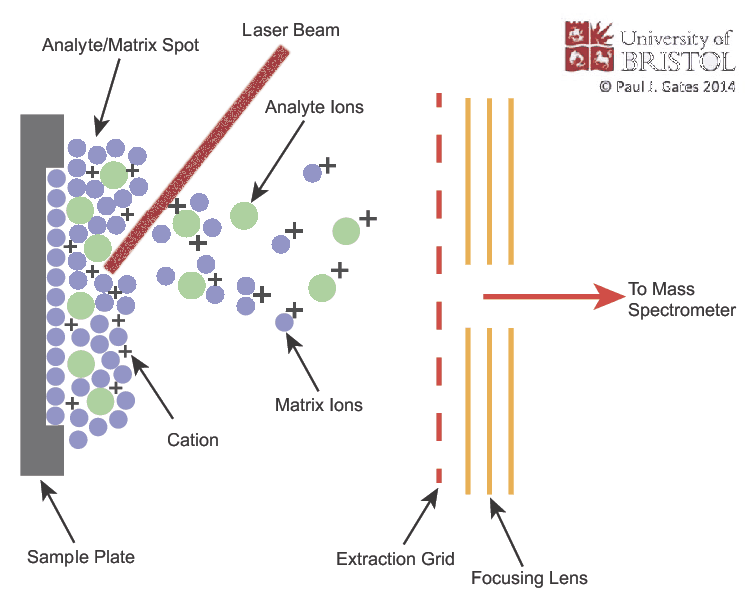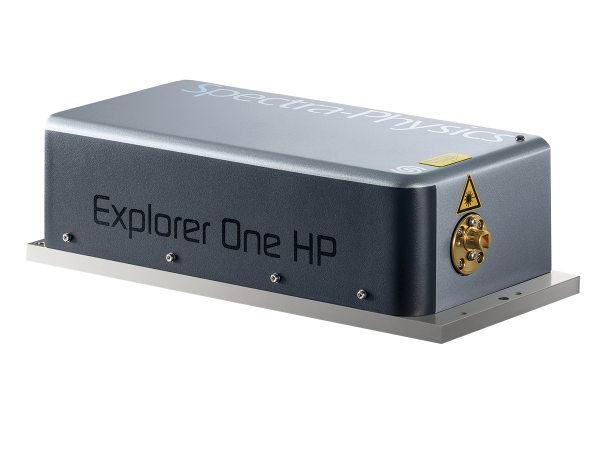MALDI Time-of-Flight Mass Spectrometry
MALDI is a soft ionization technique used in mass spectrometry (MS) that produces rapid and efficient ionization of a wide variety of molecules (see Figure 1). MALDI uses a laser energy absorbing matrix to produce ions from molecules having molecular weights ranging from 100's to 1000's of Daltons with minimal fragmentation. It has found increasing application over the past 30 years, especially for the analysis of biomolecules, e.g. proteins, peptides, DNA, and polysaccharides, and other large organic molecules, e.g. polymers, dendrimers and other macromolecules.
MALDI is similar in character to ElectroSpray Ionization (ESI) in that both techniques produce low molecular fragmentation on ionization. A primary difference between MALDI and ESI is that the former typically produces ions with a net single charge and this enables simple determination of molecular mass for most compounds. However, it can also limit the ability to analyze the largest macromolecular proteins.
Please see our MALDI-TOF application note for additional information.

Figure 1. The MALDI process (Figure used with permission of Dr. Paul Gates, University of Bristol UK).
Explorer® One™ Series Lasers

Figure 2. Explorer® One™ Compact UV and Green Laser
 Ultra-High Velocity
Ultra-High Velocity